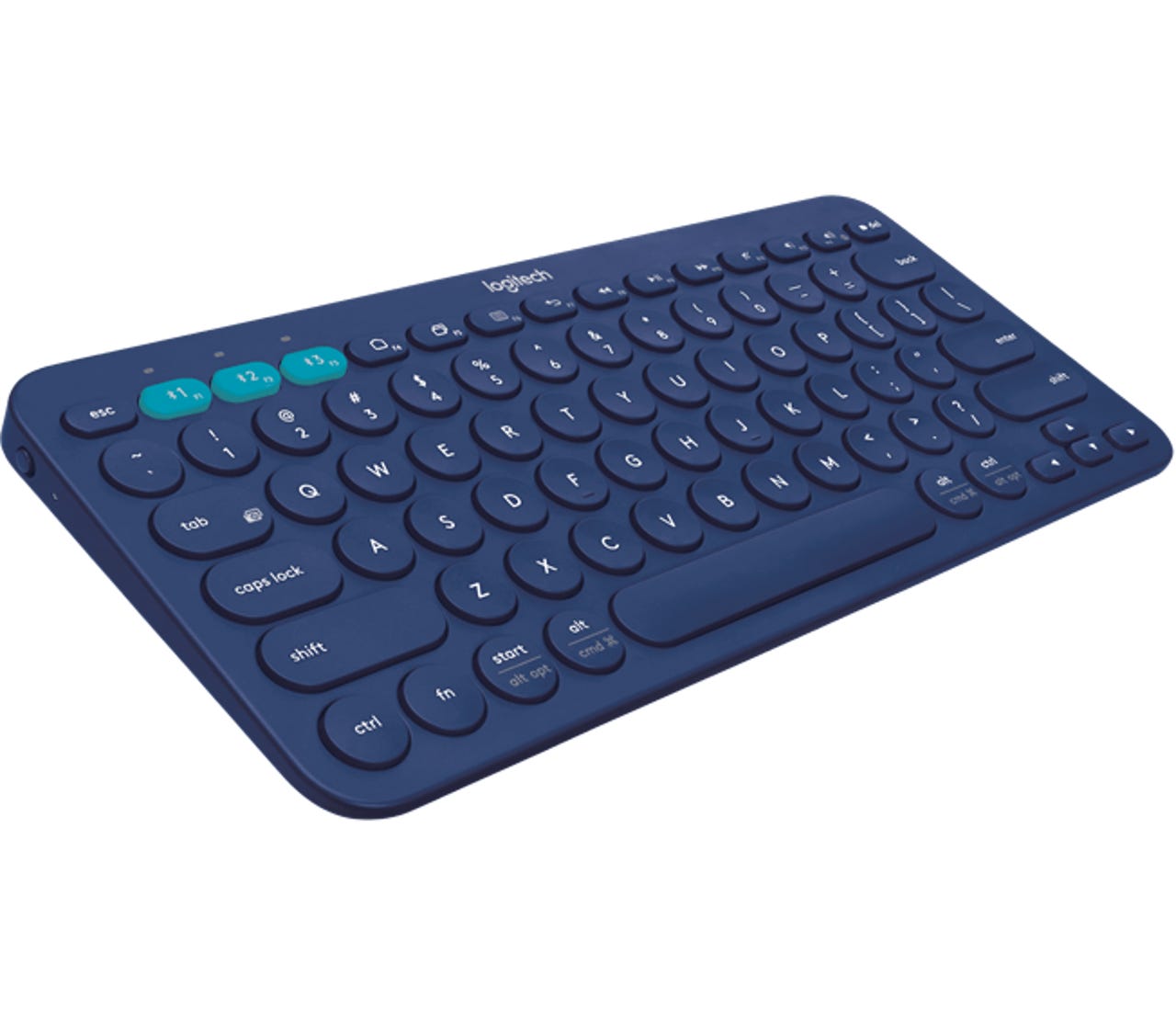Hands-On: Logitech K380 Compact Multi-Device Bluetooth Keyboard


The Logitech K380 keyboard.
I have been a loyal Logitech customer for a very long time -- since the days when we were buying something called a "bus mouse". That is only partly because I have been living in Switzerland for a long time; it is mostly because Logitech consistently makes innovative, quality products.
The latest case in point is this K380 Compact Multi-Device Bluetooth Keyboard. Wow, that's really a mouthful for a name, but every bit of it is significant.
It connects via Bluetooth "Classic" (3.0), which avoids me having to worry about compatibility with the Bluetooth 4.x standards.
You can configure up to three different Bluetooth connections, and switch between them by simply pressing the three off-colored keys (F1/F2/F3) at the top left of the keyboard. There is an LED above each of those keys, first to show when it is pairing, and later to show when it has been selected as the active connection.
A side-by-side comparison of the Logitech K350 & K380 keyboards.
Finally, it is compact. Oh my, is it compact. Here is a picture of it on my desk with my Logitech K350 keyboard. That's not an entirely fair comparison, because the K350 is a very large keyboard, but it shows the difference here quite well.
I would actually call the K380 a "comfortably compact" keyboard, because even though it is relatively small it still has good sized keys. Compared to, say, the Rii Mini Wireless Keyboard, for which you practically need a stylus to press the keys (as long as I am making unfair comparisons...).
The K380 has round (or oval) keys. I'm sitting here racking my brain trying to think what kind of computer I used many years ago which also had round keys, and I can't come up with it. It wasn't the PCjr, it wasn't the ZX... What the heck was it? Suggestions, anyone?
The keys have enough travel and resistance to be comfortable to use. From the feel I suspect it is a membrane-style keyboard. The keys are obviously placed rather close together (it's compact - duh), but not so close that I can't type normally on it. It obviously doesn't have a numeric pad, but it has a full set of F1-F12 keys, arrow keys, and Ctrl-Alt-Fn-Start keys.
Pairing the K380 is very simple -- just press and hold one of the three Bluetooth keys for three seconds. The status LED just above it starts to blink, indicating that it is ready for pairing, and stops blinking when it has successfully paired. I have had absolutely no trouble pairing it with my Raspberry Pi 3 using the built-in Bluetooth adapter, other Raspberry Pi models using a Bluetooth USB dongle, or various other notebooks and netbooks (all running Linux of course).
Switching between Bluetooth connections is surprisingly easy and surprisingly reliable. I've had a few other Bluetooth peripherals which supported multiple connections, but none of them have been as easy as this. The Logitech Ultra-Thin Touch Mouse, for example, has a mechanical switch on the bottom that you have to change.
I've had the K380 paired to three different computers which were all running on my desk, and then typed on computer 1, touch F2, typed on computer 2, touched F3, typed on computer 3 -- all without significant waiting to for the active connection to change.
The K380 can also be paired with a smartphone or tablet, so it is easy to imagine the small size, light weight and multi-device capability allowing you to carry the keyboard around and use it on different devices in different places as needed. Laptop in F1, tablet on F2 and phone on F3.
There is a power on/off switch, which you can see on the upper left side in the picture at the top. The keyboard is powered by two AAA batteries, which Logitech says should last for 24 months of "normal" use. I assume that includes switching it off when it is not in use.
Oh, last and probably least, the K380 is available in either black (with yellow F1-F3 keys) or blue (with teal F1-F3 keys). I think that I probably have insufficient aesthetic appreciation to really appreciate that.